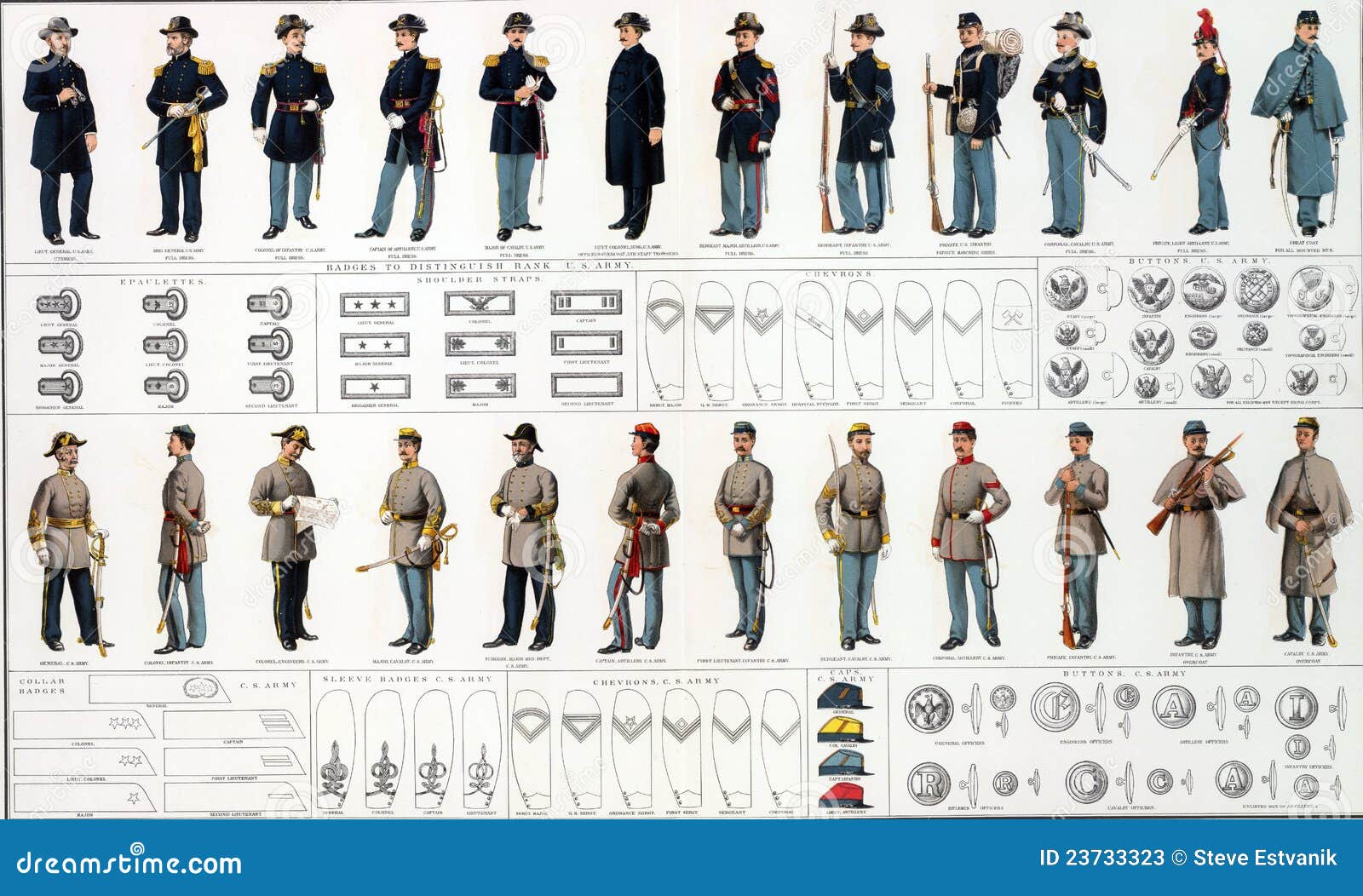Imagine stepping back in time to a Civil War battlefield. You see soldiers charging across the field, but what colors are their uniforms? The answer may surprise you, especially when it comes to the Union soldiers. While we often envision them in a simple blue, the reality was much more nuanced and varied, reflecting the changing needs and realities of the war.

Image: www.loc.gov
The color of a soldier’s uniform wasn’t just a matter of aesthetics. It played a crucial role on the battlefield, serving as a visual identifier for friend or foe. Understanding the evolution of Union soldier uniforms provides valuable insight into the complexities of the Civil War and the logistical challenges of equipping an army during a time of unprecedented upheaval.
From Blue to Grey: Early Uniform Choices
Blue as a Symbol of Unity
When the Civil War erupted in 1861, the Union Army, comprised of soldiers from northern states, adopted a uniform based on the existing U.S. Army pattern. This uniform, known as the “Union Blue,” featured a dark blue coat, trousers, and forage cap. The choice of blue wasn’t arbitrary; it symbolized the unity and solidarity of the Northern states, standing in contrast to the Confederate Army’s grey uniforms.
Variety and Experimentation
However, the reality of equipping hundreds of thousands of men quickly exposed the limitations of a standardized uniform system. The initial blue uniforms, often made with inferior materials and lacking in uniformity, proved inadequate in the harsh conditions of battle. The Union Army, recognizing this, experimented with various shades and patterns within the blue color scheme, seeking a more practical and durable uniform.

Image: www.dreamstime.com
The Evolution of Union Blues: From Dark to Lighter
The “Union Blue” Palette
The term “Union Blue” itself covers a wide range of shades, from deep indigo to a lighter, almost sky blue. The variation stemmed from differences in dyes, manufacturing processes, and the fading of fabrics over time. Early uniforms often had a darker, almost black shade, while later uniforms, especially those produced during the war’s later years, tended to be lighter.
The Practicality of Lighter Blues
The shift towards lighter blues wasn’t just about aesthetics. In the hot and humid conditions of the Southern battlefields, darker blue uniforms absorbed more heat and caused soldiers to overheat. Lighter blues, on the other hand, reflected sunlight and kept soldiers cooler in the summer months. This practical consideration became crucial for troop morale and combat effectiveness.
The Influence of Military Regulations
Standardizing the Look
While the Union Army embraced experimentation in the early years of the war, there was a growing need for standardization. The U.S. Army, in an effort to streamline production and ensure consistency, introduced regulations dictating specific shades of blue and patterns for uniforms. This standardization wasn’t always perfect, and variations still existed, but it significantly improved the uniformity of the Union Army’s appearance.
The Impact of Manufacturing
The changing regulations also influenced the manufacturing process. As the war progressed, large-scale clothing factories emerged, producing standardized uniforms in bulk. This shift towards mass production facilitated a greater consistency in the look and feel of Union soldier uniforms.
Variations and Distinctions
Regimental Colors
Beyond the core “Union Blue,” regimental colors added another layer of individuality. Each regiment, often representing a specific state or region, adopted its own distinctive color for its collar, facings (the trim around the collar and cuffs), and buttons. These regimental colors helped soldiers identify their comrades during battle, adding a sense of unity and pride within their ranks.
The Role of the Forage Cap
The forage cap, a distinctive part of the Union soldier’s uniform, also underwent transformations throughout the war. Early forage caps were often made of dark blue wool, but later versions adopted lighter shades and incorporated different patterns. The forage cap served both practical and symbolic purposes, providing protection from the elements and signifying the soldier’s rank and unit.
The Union Blue in Art and Memory
Iconic Representations
The iconic image of the Union soldier in a blue uniform has persisted in popular culture and artistic portrayals of the Civil War. From paintings and sculptures to film and literature, the blue uniform remains a powerful symbol of Union identity and sacrifice. Even today, when we think of the Union Army, the color blue comes to mind, a visual representation of the forces that fought to preserve the nation.
Remembering the Color
Beyond its artistic significance, the Union Blue holds a deeper meaning for those who study the Civil War. It reminds us of the struggles and sacrifices of those who fought for a united nation. The variations in shade and pattern, the evolution of the uniform over time, tell a story of adaptation, resilience, and the shared experience of thousands of men who fought for a common cause.
What Color Were The Union Soldiers Uniforms
https://youtube.com/watch?v=Go6-w41dcDY
Conclusion: A Colorful Legacy
The color of the Union soldier’s uniform, far from being a simple detail, offers a fascinating glimpse into the complexities of the Civil War. The evolution of the “Union Blue,” from dark to lighter shades, reflects the changing realities of the conflict and the importance of practical considerations. The variations in shades, patterns, and regimental colors highlight the importance of identity and unit cohesion within the Union Army. The Union Blue stands as a powerful symbol of the nation’s past, a reminder of the struggles and sacrifices that shaped America’s history.






